Experiment #3: Growth of Trichoderma harzianum on a soybean host with Sclerotinia sclerotiorum
Hypothesis: T. harzianum will reduce the severity of S. sclerotiorum infection in soybean Seedlings.
Experiment
Prepare 6 Soybean seedlings. Wrap 2x seedlings with S. sclerotiorum and 2x seedlings with both S. sclerotiorum and T. harzianum. Leave the last 2x seedlings as a control.
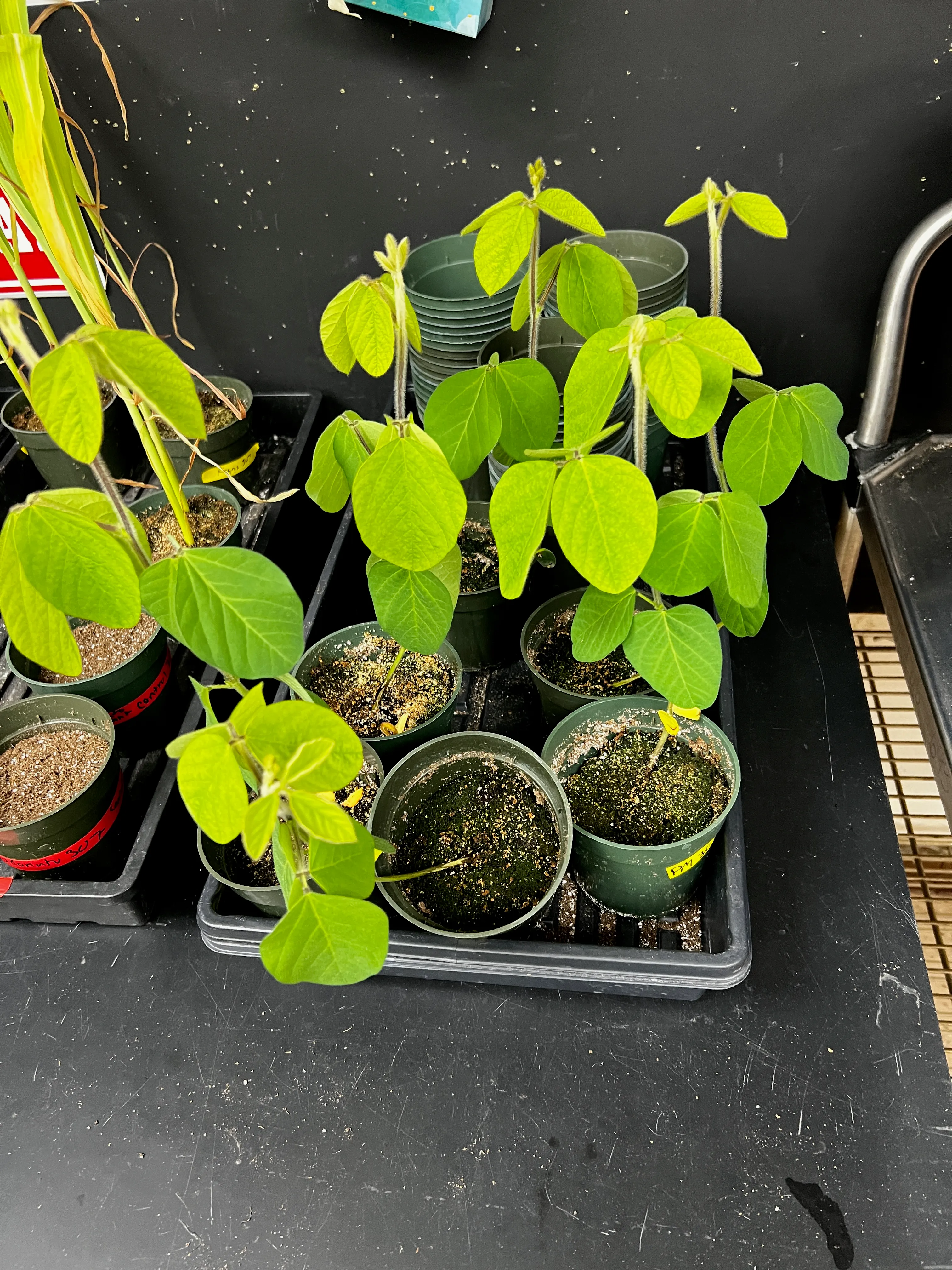 My prepared soybean seedlings
My prepared soybean seedlings
Control
In this experiment, the seedlings with no fungi will be the control. This will allow me to compare the growth of the seedlings with S. sclerotiorum and T. harzianum to the growth of the seedlings without any fungi.
Treatments
- Soybeans inoculated with S. sclerotiorum
- Soybeans inoculated with S. sclerotiorum and T. harzianum
Plants are inoculated by taking a sample of the fungi, and wrapping it around the base of the plant using parafilm. The plants were left in a grow chamber for 6 days.
Results
Control
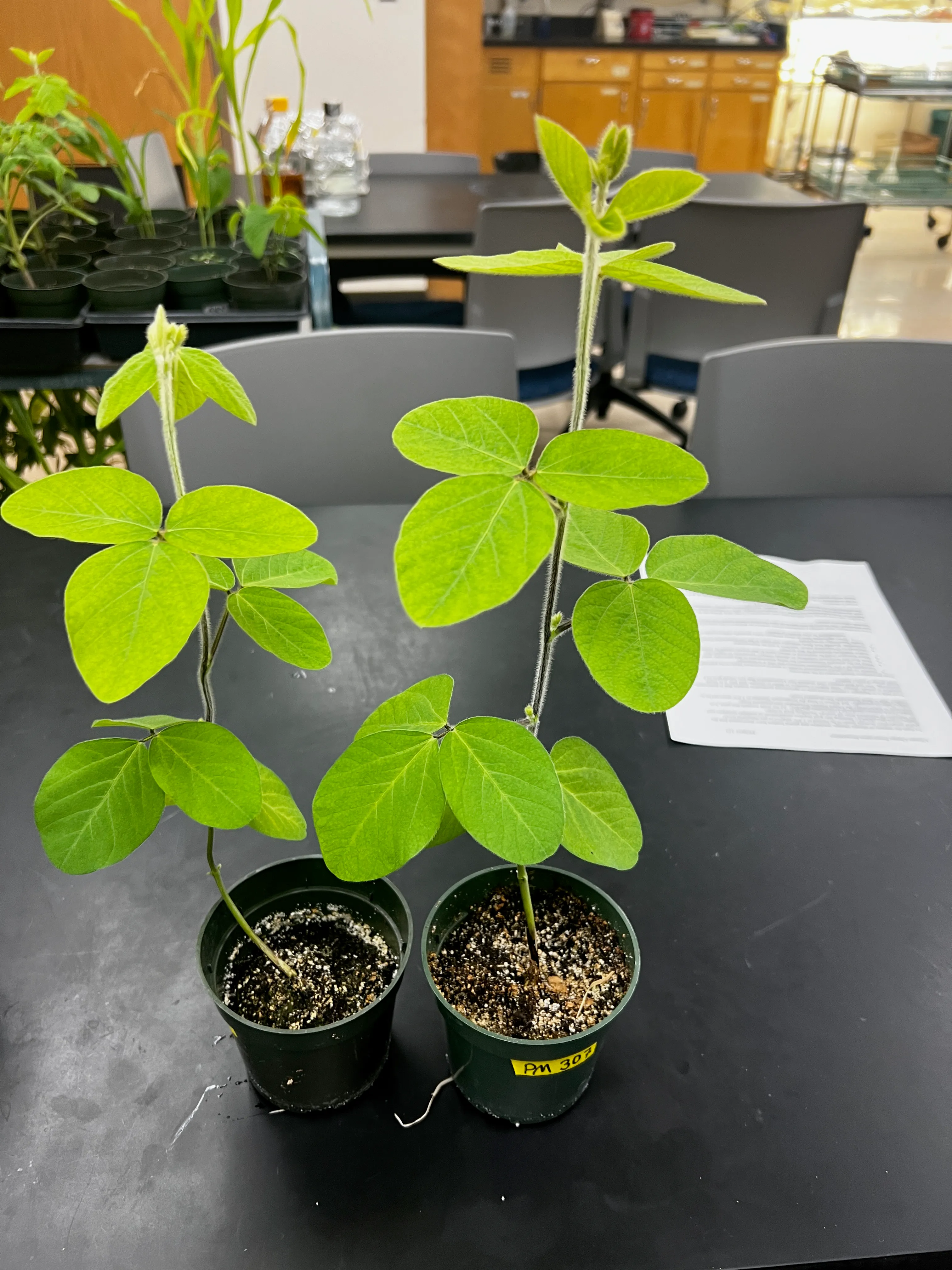 Control plants Control plants | 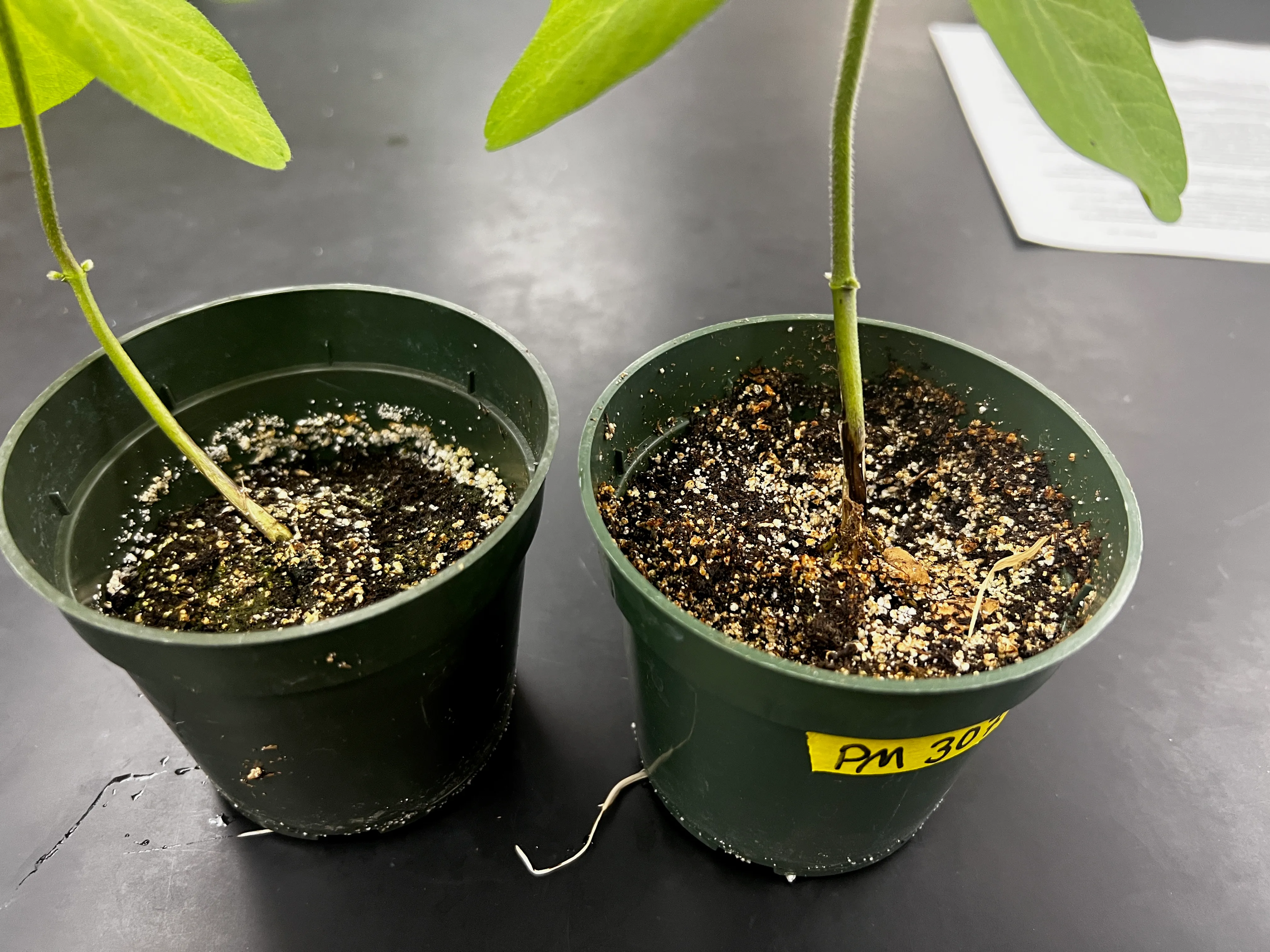 Control stems, slight natural discoloration in stems. Control stems, slight natural discoloration in stems. |
Treatment #1: S. sclerotiorum only
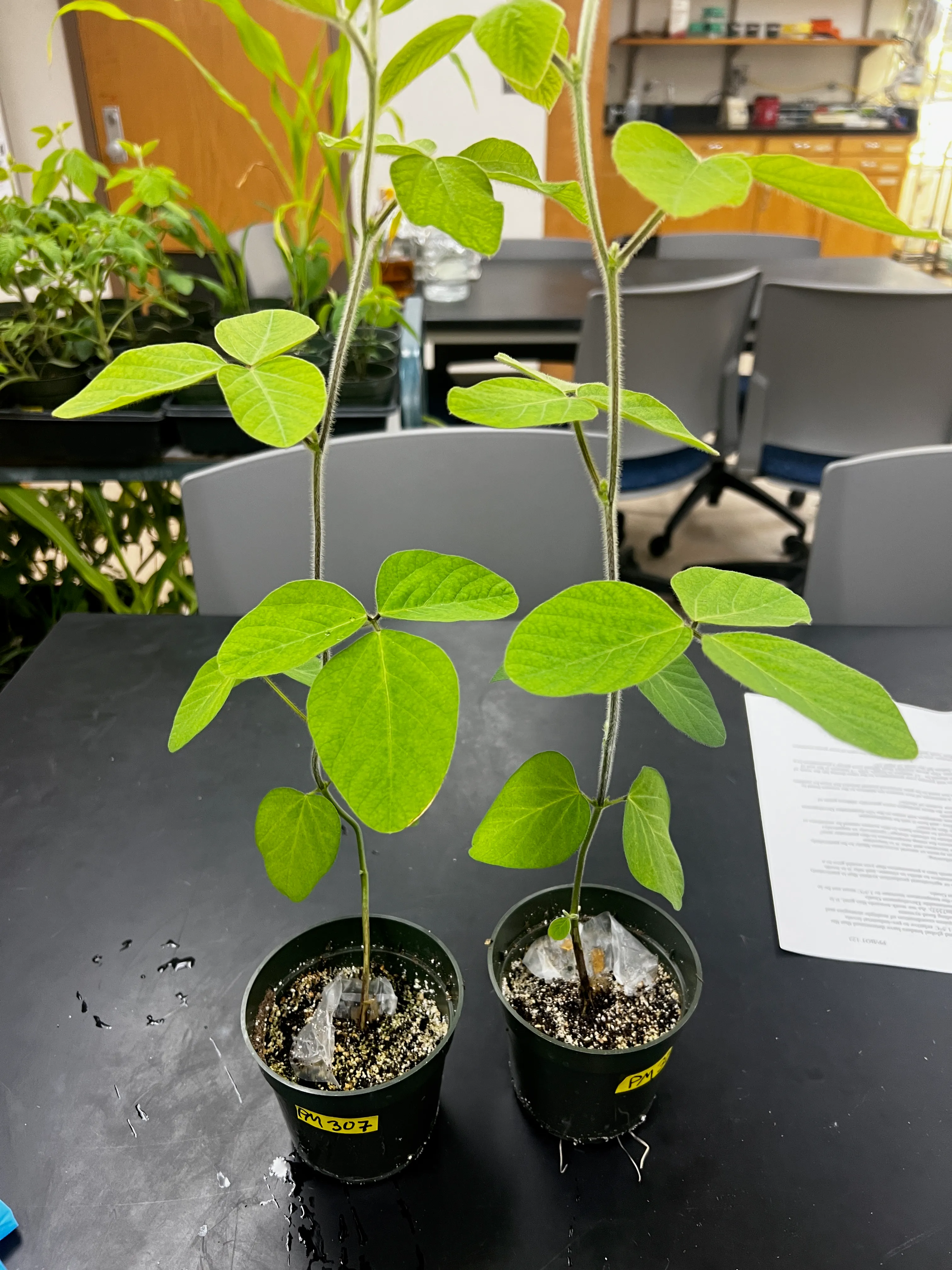 S. sclerotiorum only. More discoloration on stems, but no clear signs of disease S. sclerotiorum only. More discoloration on stems, but no clear signs of disease | 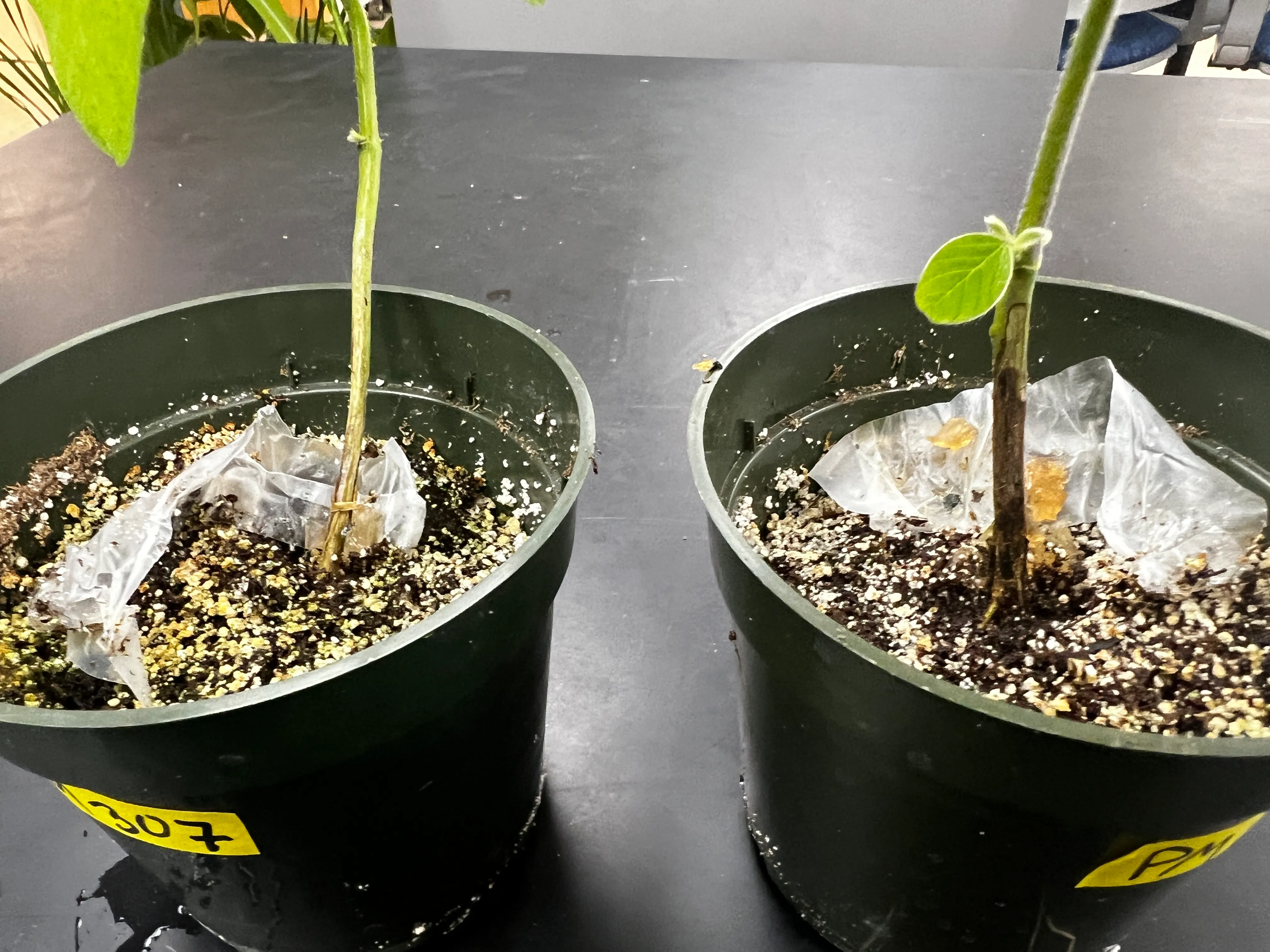 Close up on stems Close up on stems |
Treatment #2: S. sclerotiorum and T. harzianum
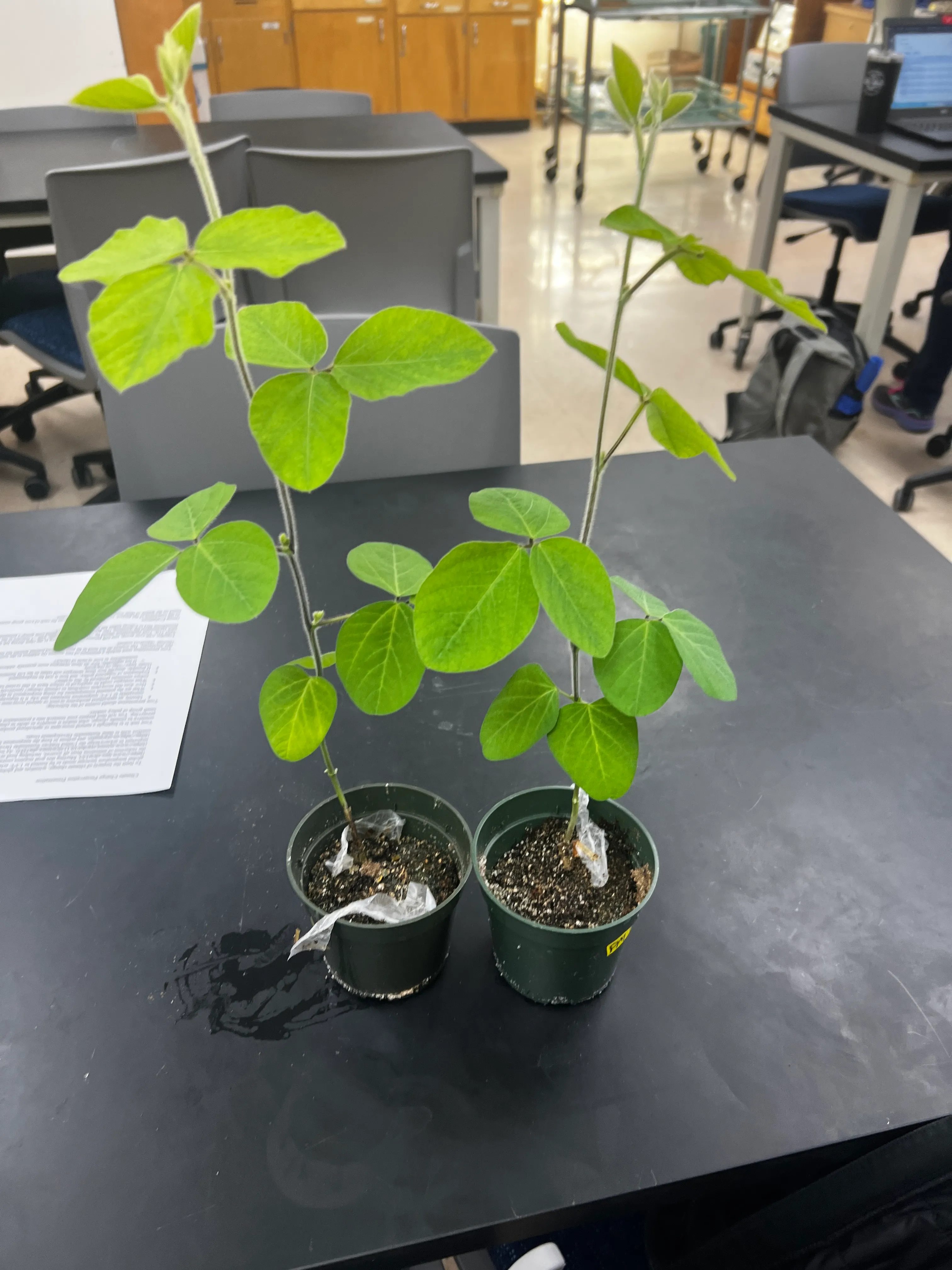 Both microbes together, discoloration is less than on S. sclerotiorum trials, but not enough to reach any conclusion Both microbes together, discoloration is less than on S. sclerotiorum trials, but not enough to reach any conclusion | 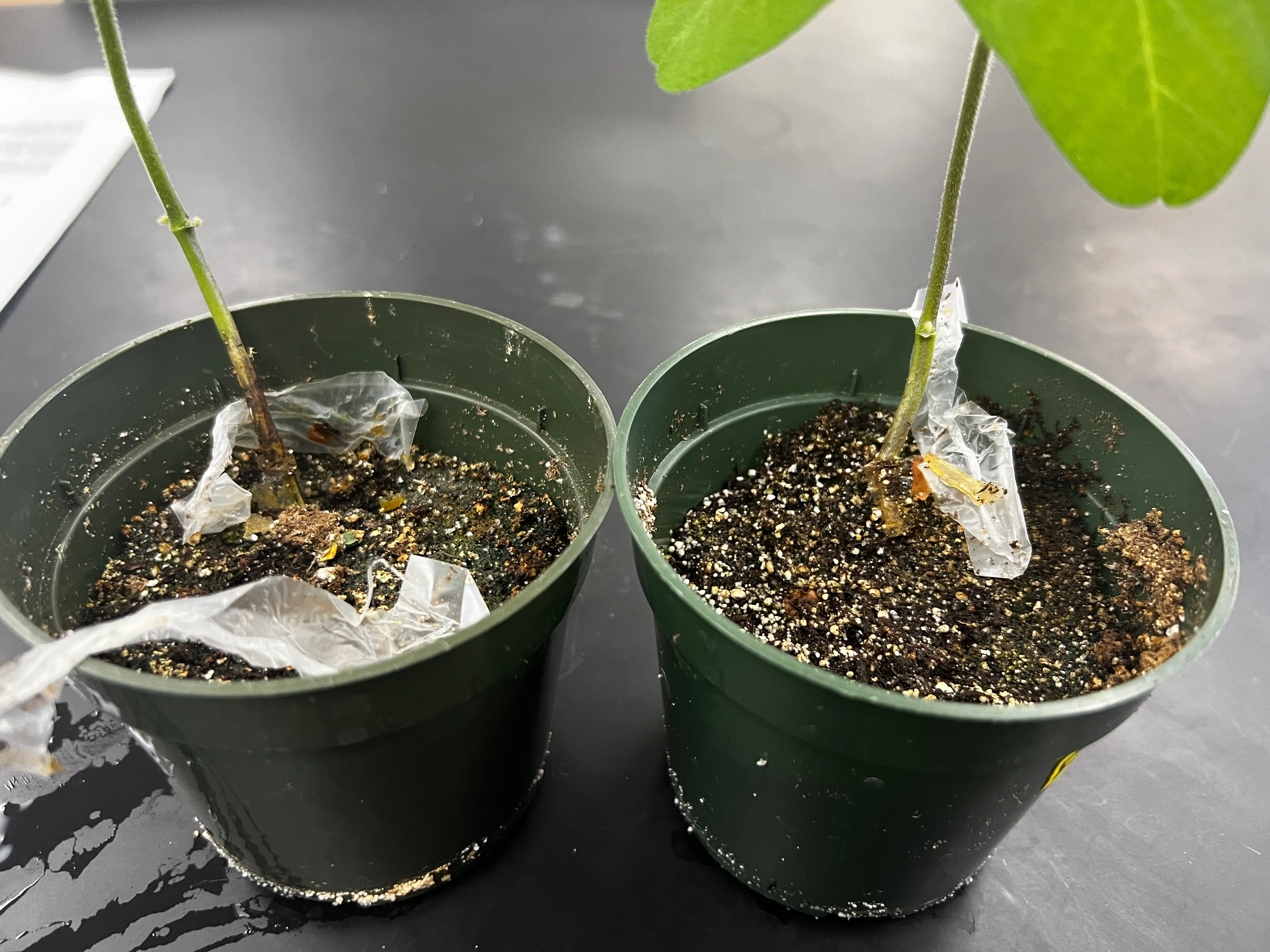 Close up on stems Close up on stems |
Conclusion
This experiment was also inconclusive. The plants with S. sclerotiorum and T. harzianum had less discoloration than the plants with only S. sclerotiorum, but not enough to reach any conclusion. The control plants had slight natural discoloration, but not enough to be concerned about. I was not able to decern if T. harzianum had any effect in reducing the severity of S. sclerotiorum (white mold) in a soybean host. In future experiments, I would…
- Use a larger sample size
- Inoculate earlier in the growth cycle
- Attach the fungi to the roots of the plants
- Use a different method of inoculation